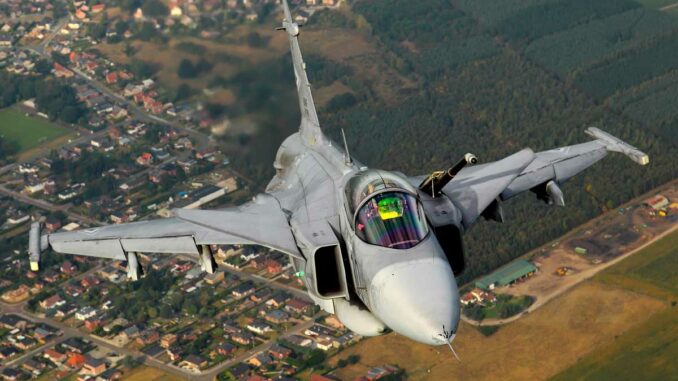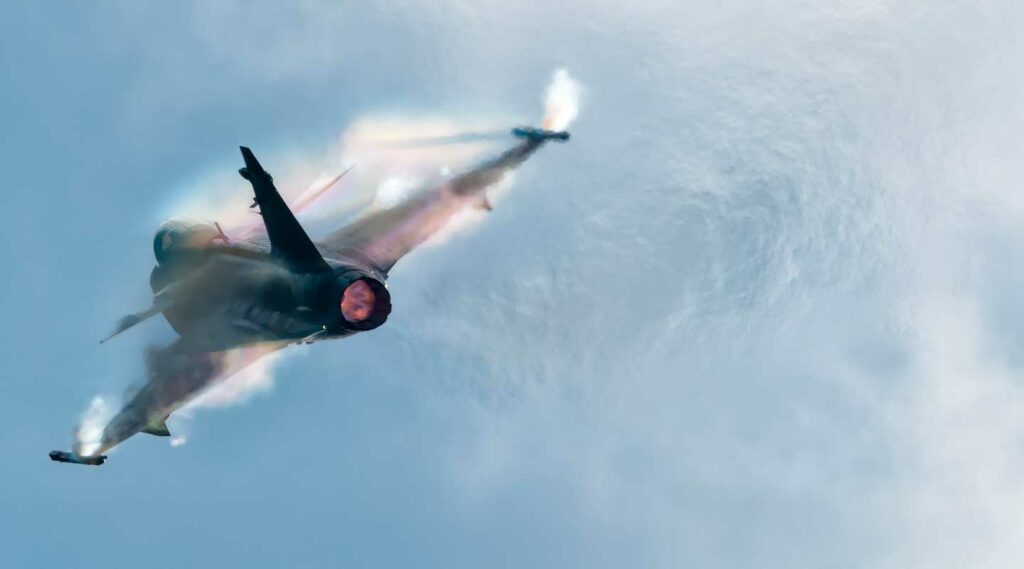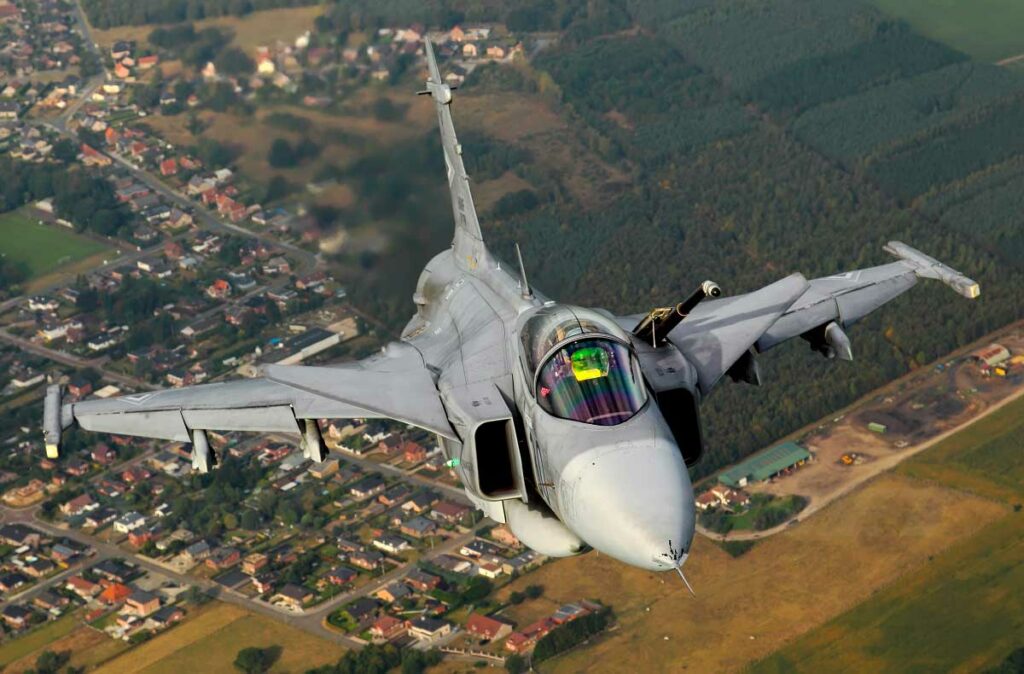
Thailand has selected the Gripen E/F fighter to renew its fleet, aiming for strategic independence and modernization of its air capabilities.
The Royal Thai Air Force (RTAF) has announced its intention to acquire the Saab Gripen E/F, a potential replacement for its Gripen C/D fleet. This strategic choice aims to strengthen Thailand’s operational capabilities in the face of rising regional tensions and technological developments in neighboring air forces. The contract has yet to be formalized, but it is expected to include a major industrial package, including technology transfers, local production support, and job creation. With this decision, Thailand joins Sweden and Brazil in the select circle of users of the Gripen E/F, an aircraft designed for conflict in degraded environments, with a strong electronic and multi-threat component.

A strategic decision in a tense regional context
The selection of the Gripen E/F is part of a strategy to strengthen Thailand’s air sovereignty. For several years, Bangkok has been observing the rapid evolution of air fleets in Southeast Asia. Vietnam has modernized its Su-30MK2Vs, Indonesia has formalized an order for Rafale aircraft, while Malaysia has selected KAI’s FA-50s. Against this backdrop, Thailand must maintain its deterrence and intervention capabilities.
The Gripen E/F offers a modern architecture with upgraded weapon systems, a Raven ES-05 AESA radar, a passive and active electronic warfare system, latest-generation tactical data link capability, and increased payload. Saab claims that the Gripen E/F is optimized for asymmetric and electronic warfare, which responds to new forms of air warfare in the region.
The Swedish aircraft is renowned for its ability to operate on short runways or austere surfaces, which offers real flexibility in the event of conflict or attack on main bases. In a region where fixed air bases can quickly become vulnerable, this dispersed operating capability is considered essential.
Finally, the selection of the Gripen allows Thailand to maintain technological independence from traditional suppliers such as the United States and China, thus avoiding excessive geopolitical dependence.
An integrated industrial program and national economic stakes
The contract announced between Saab and Thailand is not limited to the sale of aircraft. It includes a major offsets program aimed at strengthening local industrial capabilities. While details remain confidential, this type of agreement generally involves:
- The creation of highly skilled jobs in the aerospace sector,
- Technology transfer to national companies,
- Support for the training and development of MRO (Maintenance, Repair and Overhaul) centers,
- Cross-investment in related sectors (electronics, defense, cybersecurity).
This model is similar to the one already implemented in Brazil with Embraer, where Saab co-developed production lines and transferred part of the Gripen assembly locally. In Thailand, this program could benefit the Aviation Industry and Development Corporation of Thailand (AIDC) and boost employment in the country’s eastern economic corridor.
Based on previous Gripen contracts, each aircraft costs an average of €80 to €85 million (approximately 3.3 billion THB, £72 million, $91 million) depending on the configuration, excluding logistical support and infrastructure. The final order could be for between 8 and 12 aircraft, representing a total contract worth potentially close to €1 billion.
A logical evolution from the Gripen C/D
Thailand has been operating a fleet of 12 Gripen C/D aircraft based in Surat Thani, in the south of the country, since 2011. These aircraft have proven their effectiveness in the regional context, with high availability rates and consistent interoperability with Thai radars and warning systems.
The acquisition of the E/F version is part of a logistical and doctrinal continuity approach. Maintenance, pilot training, and spare parts stocks can largely be retained or adapted, limiting the costs associated with a platform change.
The main differences between the two generations are in the software architecture, carrying capacity, radar, and sensors. The Gripen E features a 360° passive warning system, advanced data fusion capabilities, and can carry a payload of over 5,300 kg, which is 30% more than the previous version.
This improvement allows it to carry long-range missiles such as the Meteor, precision-guided bombs, and ISR pods, meeting the needs of a multi-role fighter aircraft in an increasingly complex environment.
The geopolitical consequences of this choice
The choice of the Gripen E/F sends a clear political signal. It marks Thailand’s desire to diversify its defense partnerships and break free from Chinese or American influence in its air sector.
The United States, which had proposed the F-16V, was not selected. China, for its part, had promoted the JF-17 Block III, which is cheaper but considered less effective according to Thai technical criteria. The Gripen is perceived as politically neutral, while offering NATO-compatible standards, which facilitates cooperation with non-aligned or allied neighbors.
This decision could influence other countries in the region, notably the Philippines and Bangladesh, which are also looking to modernize their fleets at a controlled cost. It also strengthens Sweden’s position in the Asian defense market, a sector still dominated by major American, Russian, and Chinese exporters.

A strategic projection for the next two decades
The arrival of the Gripen E/F is expected to be spread over the period 2027–2032, in line with the typical logistics schedule for this type of program. This window will allow Thailand to organize the training of crews and the parallel modernization of its infrastructure.
At the same time, the RTAF is planning a capability rebalancing, with the gradual withdrawal of the modernized F-5s still in service and the redeployment of airborne ISR assets. The Gripen E/F, in its two-seat version (F), could also be used for tactical command, electronic warfare, and drone coordination missions.
In the long term, this choice puts Thailand on a path compatible with regional and international multilateral alliances. The Gripen E/F is designed to adapt to rapidly evolving air combat doctrines, including the integration of autonomous systems, networked warfare, and GNSS-denied (GPS-free) environments.
War Wings Daily is an independant magazine.